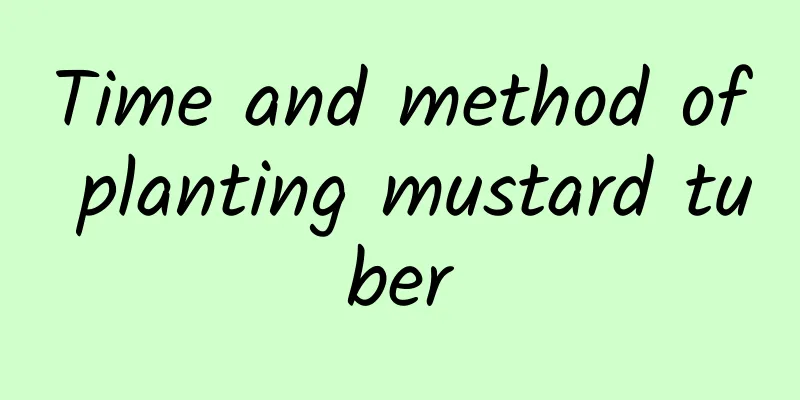How many days does it take for coriander to sprout?

|
Coriander, also known as cilantro, is not only a vegetable , but is also often used as a condiment . It is widely favored by diners for its unique aroma. This plant has strong cold resistance, especially when sown in autumn, and can safely survive the winter seedling stage even outdoors. Let's learn how many days it takes for coriander to sprout. How many days does it take for coriander to sprout? The germination time of coriander is affected by many factors, including seed treatment, soil conditions, temperature and humidity. After germination and sowing, seedlings will emerge in 7 to 10 days, but the germination time of untreated coriander seeds varies. How to make coriander germinate quickly and sprout evenly? 1. Select high-quality seeds Choose seeds that were harvested that year, have mature and plump grains, are free of blighted and insect-damaged seeds, and have a high germination rate. Avoid using seeds that are more than three years old, as their germination rate will be reduced, which can be the main reason for uneven emergence. At the same time, be wary of selling new and old seeds together, as this can lead to seedling shortages. The identification method is to observe the surface color of the seeds. The new seeds have uniform and bright color, while the old seeds have different colors and are dark in color. Such seeds should not be purchased. 2. Plant seeds at suitable temperatures Coriander prefers a warm and cool climate and grows best in cool temperatures and cannot tolerate high temperatures. Coriander seeds usually do not germinate when the temperature exceeds 25℃. This is the main reason why they do not germinate when sown in early autumn. High temperatures will inhibit germination. The most suitable growth temperature for coriander is 17-20℃, and it can grow normally at 10-15℃. Seedlings grow slowly when the temperature is above 20℃ and grow poorly when the temperature is above 26℃. However, coriander seedlings can tolerate low temperatures of -6 to -8°C, and mature coriander can tolerate low temperatures of -1 to -3°C. Therefore, in the Huanghuai region, autumn sowing should be carried out from the end of August to the beginning of September. 3. Seed treatment before sowing Under suitable temperature and humidity, the germination time of coriander dry seeds directly sown is usually 8-12 days. In order to promote early emergence and uniform seedlings, the following measures can be taken to treat seeds: Seed rubbing: Choose plump new seeds and break their thick outer shells to facilitate water absorption and germination. Place the seeds on the ground and rub them repeatedly with gloves or tap them with a wooden stick until the seeds are split in half. Germination: After dividing the seeds into two halves, soak them in clean water for about 12 hours and then put them in a cloth bag. The traditional method is to hang the seeds in a well, 5-6 cm above the water surface, and soak them once a day. After about 7 days, when 60% of the seeds turn white, they can be sown. The modern method is to put the soaked seed bag in a refrigerator at 5-10℃, rinse it once a day, and finish germination when 60% of the seeds turn white. Gibberellic acid soaking for germination: After dividing the seeds into two halves, soak them in 20ppm gibberellin solution for about 12 hours, and then continue to soak them in clean water for 10 hours. After controlling the water, germinate them in a refrigerator at 5-10℃. Rinse once a day. When 60% of the seeds turn white, they can be sown. 4. Ensure the soil moisture is appropriate Loose and moist soil is the basis for ensuring full seedling growth, and water is a prerequisite for seed germination. In order to make coriander germinate quickly and evenly after sowing, the planting site must have sufficient moisture and the soil's field water holding capacity should be around 80%, that is, the soil 5 cm deep can be held into a ball and will fall apart when it hits the ground. If it is lower than this standard, water it before sowing. When sowing, pay attention to the depth of soil covering, which is generally 1-1.5 cm. Too deep will affect germination. After sowing, pay attention to shade and moisturize, and avoid strong sunlight that may cause rapid evaporation of the soil and affect emergence. A layer of straw can be covered to retain moisture. When 60-70% of the seeds are above the soil, remove the covering immediately to avoid the formation of tall seedlings. To sum up, the germination time of coriander is generally around 7 to 10 days, but this time may vary due to specific planting conditions and seed treatment methods.
|
<<: How many days does it take for carrots to sprout out of the soil?
>>: Which month is the best time to repot osmanthus?
Recommend
How to fertilize potted green radish in winter
1. Methods Because the temperature in winter is v...
Passion fruit benefits and contraindications
1. Efficacy 1. Promote digestion. Passion fruit c...
Can corn husks be used as fertilizer?
Corn husk fertilizer Corn husks can be used as fe...
Zile breeding methods and precautions
Purple Joy is easy to grow. It is a relatively ha...
Disease and insect pest control of Nivea
Disease and Pest Control of Nugget Grass Aphids o...
What is the best fertilizer for orchids?
1. What fertilizer to use for orchids Inorganic f...
Reasons why orange trees drop leaves
1. Insufficient light For orange trees grown indo...
How to prune small plum trees
Prune tree pruning time Small plum trees need to ...
How to make the seeds of fortune germinate quickly
Germination environment of rich seeds The seeds o...
How to prune pepper trees
Pruning period Generally speaking, we choose to p...
The most practical fertilizer for orchids
1. Mushroom Soil The nutrient content of mushroom...
How to care for wintersweet after it fades
Water in time after the wintersweet flowers fade ...
How to propagate red sorrel and what to pay attention to
How to propagate Oxalis serrata The reproduction ...
How to plant gardenias? Planting time and method
Gardenia planting time Gardenia seeds are sown in...
When is the best time to plant water spinach seeds?
Water spinach seed planting time Water spinach is...









